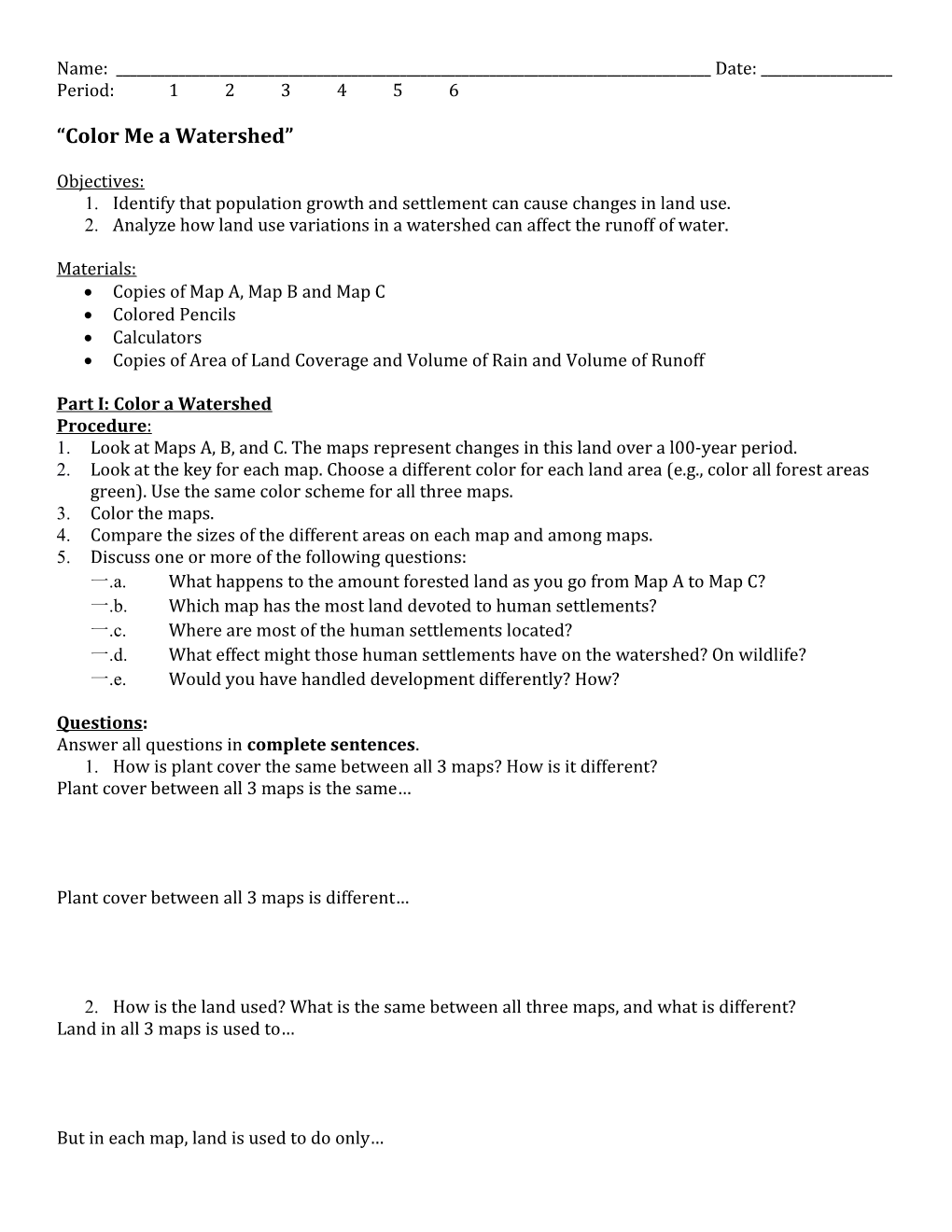Name: ______Date:______
Period: 123456
“Color Me a Watershed”
Objectives:
- Identify that population growth and settlement can cause changes in land use.
- Analyze how land use variations in a watershed can affect the runoff of water.
Materials:
- Copies of Map A, Map B and Map C
- Colored Pencils
- Calculators
- Copies of Area of Land Coverage and Volume of Rain and Volume of Runoff
Part I: Color a Watershed
Procedure:
- Look at Maps A, B, and C. The maps represent changes in this land over al00-year period.
- Look at the key for each map. Choose a different color for each land area (e.g., color all forest areas green). Use the same color scheme for all three maps.
- Color the maps.
- Compare the sizes of the different areas on each map and among maps.
- Discuss one or more of the following questions:
- What happens to the amount forested land as you go from Map A to Map C?
- Which map has the most land devoted to human settlements?
- Where are most of the human settlements located?
- What effect might those human settlements have on the watershed? On wildlife?
- Would you have handled development differently? How?
Questions:
Answer all questions in complete sentences.
- How is plant coverthe same between all 3 maps? How is it different?
Plant cover between all 3 maps is the same…
Plant cover between all 3 maps is different…
- How is the land used? What is the same between all three maps, and what is different?
Land in all 3 maps is used to…
But in each map, land is used to do only…
- Which question did you discuss?
- What was the answer you came up with?
- Why is understanding “baseline” important for this activity?
- How do you think Baselines will be important next week as we discuss and investigate the health and current state of Puget Sound?
- What do you want to understand about changes in the sound in order to gain insights into the Sound’ health? Write 3 questions.
Question 1:
Question 2:
Question 3:
Part 2: Canopy Changes
To the right are two satellite images of Puget Sound from 1972 and 1996, showing the change in canopy cover.
- The light areas are trees, the dark areas are human built structures
- Use this image to answer the questions on the following page.
- What is a canopy?
- What does it look like on the satellite image?
- How has the baseline shifted?
- What might be the effect on Puget Sound of fewer trees today?
Online Research:
- Research online the answer to one of your questions and be prepared to share the answer with our class.
Question:
Answer:
Teacher Instructions:
Warm Up:
- What did the land and water around Issaquah look like 100 or 50 years ago?
- What happened when water fell on the ground then compared to now.
- Think of Lake Sammamish. Woud its appearance and condition have been altered over the years?
Tell students that maps can teach us about the past and possibly answer such questions.
